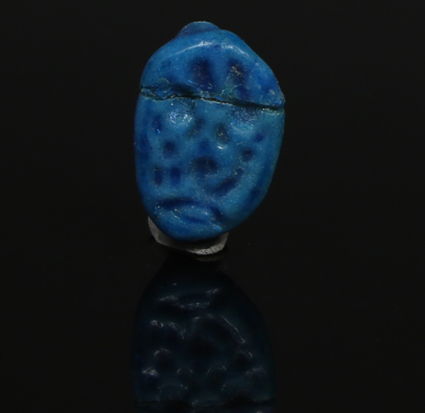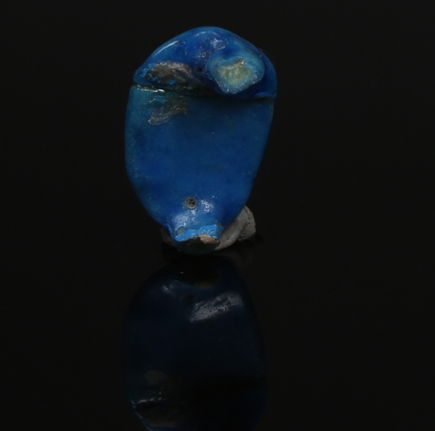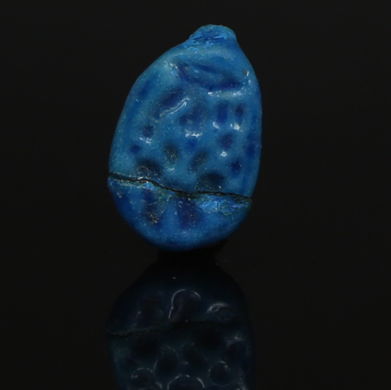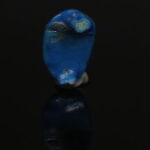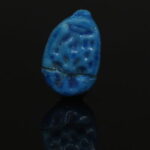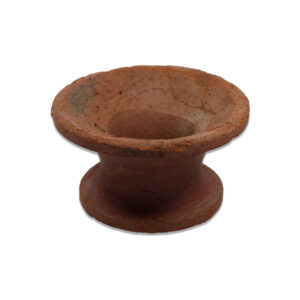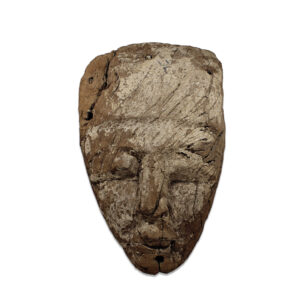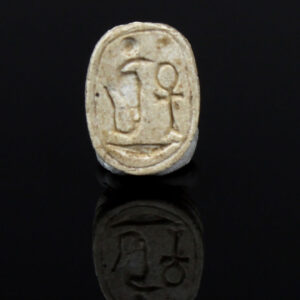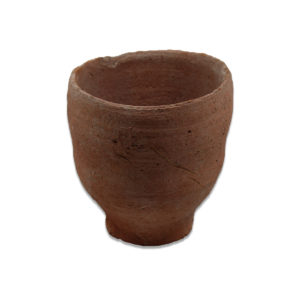Description
| ITEM | Ring fragment, Pharaoh Ay |
| MATERIAL | Faience |
| CULTURE | Egyptian |
| PERIOD | Amarna period, 1325 B.C |
| DIMENSIONS | 17 mm x 11 mm |
| CONDITION | Good condition, fragmentary and repaired |
| PROVENANCE | Ex Museum Exhibiton of the Arbeitsgruppe für Biblische Archäologie, Germany (Deaccession) |
Pharaoh Ay was a prominent figure during the late Amarna Period of ancient Egypt, ruling as the penultimate pharaoh of the 18th Dynasty (circa 1323–1319 BCE). His rise to the throne came after the death of the famous boy-king Tutankhamun, under whom Ay had served as a high-ranking official and advisor. Ay’s background is somewhat enigmatic, but he is believed to have held influential titles such as “God’s Father,” possibly due to a familial connection with the royal family, and was closely associated with the Amarna court of Akhenaten, Tutankhamun’s predecessor. Though he was not of royal blood, his powerful position allowed him to assume the throne in his later years.
Ay’s reign is closely connected to the religious and political turmoil of the Amarna Period, which was marked by Akhenaten’s radical religious reforms that promoted the worship of the sun god Aten at the expense of the traditional Egyptian gods. After Akhenaten’s death, Tutankhamun and his court, including Ay, worked to restore the old religious order and reestablish the worship of Amun and other traditional deities. As pharaoh, Ay continued this restoration, further distancing Egypt from the Amarna heresy. His reign was relatively short—lasting around four years—but it represented a transitional period in which the old religious and political structures were being reestablished after the disruptions of Akhenaten’s rule.
Ay’s tomb, located in the Valley of the Kings (KV23), is another reflection of his power, though it is simpler compared to the tombs of more prominent pharaohs. He was originally buried in the tomb prepared for Tutankhamun but later relocated. Interestingly, Ay’s successor, Horemheb, attempted to erase Ay’s legacy, perhaps due to his controversial rise to power or his association with the Amarna regime. Despite these efforts to diminish his historical significance, Ay’s role during the tumultuous end of the 18th Dynasty remains an important chapter in the complex history of the Amarna Period and the restoration of traditional Egyptian beliefs.


